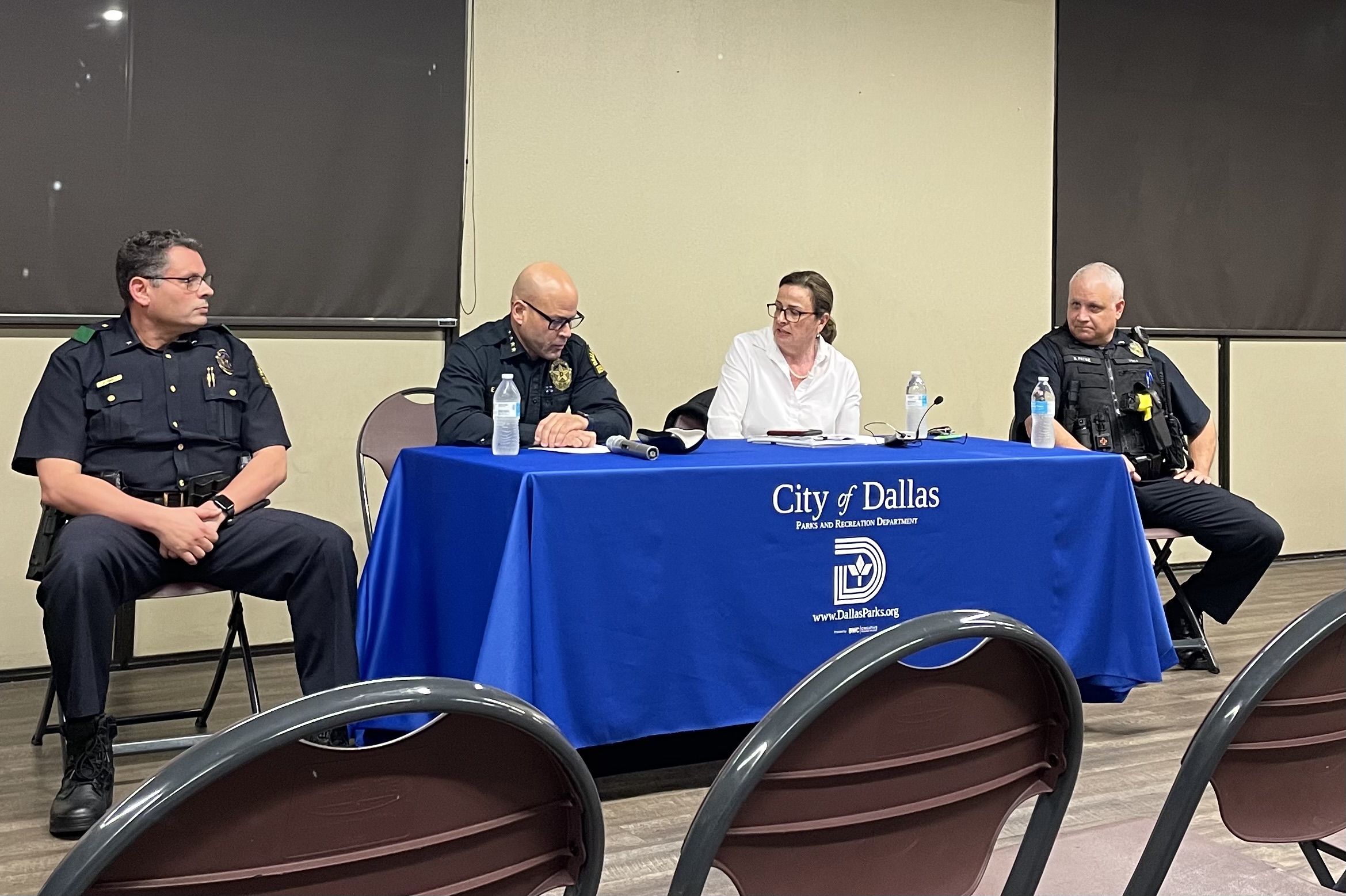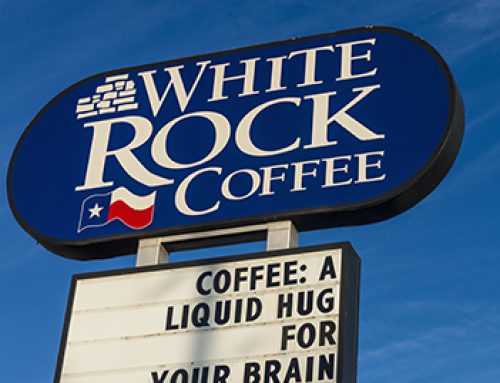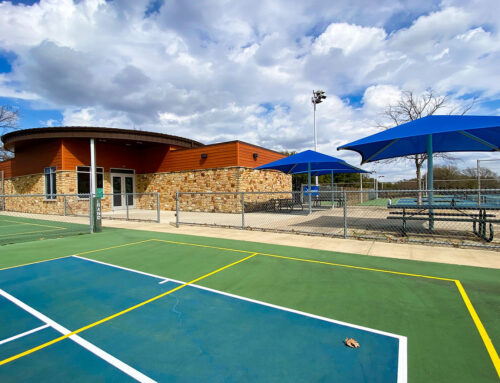
From left: Dallas Police Maj. Osama Ismail, Chief Eddie Garcia, Council member Paula Blackmon, acting Northeast Division Commander Lieutenant Brian Payne attend a safety meeting for District 9 on Dec. 8, 2022. Photography by Renee Umsted.
District 9 residents gathered Thursday night with city officials to discuss safety in the neighborhood.
City Council member Paula Blackmon co-hosted the meeting with Dallas Police Chief Eddie Garcia and members of the department, as well as representatives from Code Compliance, the Office of Homeless Solutions, neighborhood police officers, community prosecution and Park Rangers.
Garcia summarized the violent crime reduction plan, which consists of a crime grid, place network investigations and focused deterrence.
As part of the crime grid, the department separated the city into 101,000 grids and focuses on 50 of the “hotspots” at a time. These areas were chosen because they contain a concentrated level of violent crime committed by a small percentage of people.
Since it was implemented, the violent crime reduction plan has enabled a 40%-70% reduction in violent crime in crime hotspots. Overall, District 9 has seen a 6% decrease in violent crime over the past year.
A few areas in District 9, including on Ferguson Road and Barnes Bridge, were among the first grids when the crime plan was implemented.
The 11700 block of Ferguson Road was also chosen for place network investigations, which is about strengthening neighborhoods holistically.
“So yes, the police department has to go in and weed out the criminal element that’s terrorizing that community,” Garcia says. “But then you have to stop and take a look at, does that apartment complex need fences? Does it need lighting? Does it need cameras? Do we need the city attorney’s office to hold landlords accountable? Do we need a park nearby so that kids can play? Do the streets need to get fixed in that area? Does it need more parking around?”
Focused deterrence involves blight remediation and trying to “change the behaviors of high-risk offenders through a combination of deterrence, incapacitation (arrest), community involvement, and the provision of alternatives to violence.”
Neighbors and Dallas residents in general have often stressed the need to hire additional officers. The department is growing slowly, and faster growth wouldn’t be sustainable, Garcia says, because the infrastructure isn’t in place to support it. The department would need more space in the academy, more recruiters and more trainers, for example, to hire more officers than the department is on track to hire.
Blackmon asked the police how District 9 residents could offer support.
Acting Northeast Division Commander Lieutenant Brian Payne says the best thing to do when neighbors see something suspicious or problematic is calling 911 and providing as many details as possible, including license plates. The department now has license plate-reading technology that is helping officers solve crimes and make arrests.
Another suggestion for neighbors was to stop leaving their valuables in plain view in their vehicles, particularly at White Rock Lake, which has the highest number of burglaries anywhere in Northeast Division territory.
Also, don’t leave keys in the vehicle to keep the engine running.
“When you pull up to 7-Eleven, your car doesn’t get that cold,” Payne says.
And of course, speeding was discussed. Maj. Osama Ismail says the traffic unit has issued 1,300 citations on Ferguson Road this year.
Some drivers have been sharing notices of “speed traps” on neighborhood Facebook groups or other social platforms. Ismail says it’s “demoralizing” to officers when residents ask for help from the police, receive help and then share information with others to keep the police from doing the job they’re trying to do.
While several corridors in Dallas and specifically East Dallas are being studied to ensure the infrastructure is updated and efficient to mitigate speeding, it’s best if drivers adhere to speed regulations.
The Office of Homeless Solutions also spoke briefly about their work. In a 311 report, include your name, address, email and phone number, as well as a detailed description of the encampment. For example, it’s helpful for city staff to know whether there were tents or if the resident interacted with the individuals on the street.
But it’s important for neighbors to know that the process, which could include arranging shelter stays or rehousing programs and cleaning trash and debris, takes time.





